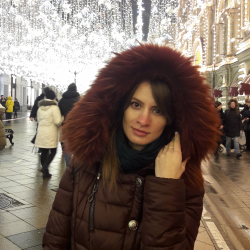Read the text «Your teeth»
You bite into an apple and then try to start talking to your friend about yesterday's math homework. Suddenly something feels funny — one of your baby teeth has fallen out! It's been loose forever, and now there it is, right in your hand. And you have an empty space in your mouth big enough to poke a drinking straw through.
Before you put that tooth under your pillow, did you know that there is much more to that tooth than meets the eye? A single tooth has many different parts that make it work. And teeth play an important role in your daily life. They not only let you eat stuff like apples, they also help you talk. So let's talk teeth!
Tiny Teeth
Unlike your heart or brain, your teeth weren't ready to work from the day you were born. Although babies have the beginnings of their first teeth even before they are born, teeth don't become visible until babies are about 6 to 12 months old.
After that first tooth breaks through, more and more teeth begin to appear. Most kids have their first set of teeth by the time they are 3 years old. These are called the primary teeth, baby teeth, or milk teeth and there are 20 in all. When a child gets to age 5 or 6, these teeth start falling out, one by one.
A primary tooth falls out because it is being pushed out of the way by the permanent tooth that is behind it. Slowly, the permanent teeth grow in and take the place of the primary teeth. By about age 12 or 13, most kids have lost all of their baby teeth and have a full set of permanent teeth.
There are 32 permanent teeth in all — 12 more than the original set of baby teeth. Most people have four teeth (called wisdom teeth) grow in at the back of the mouth when they're between 17 and 25 years old. These complete the adult set of 32 teeth.
Treating Teeth Kindly
Brushing your teeth with fluoride toothpaste is your best bet when it comes to keeping your teeth in tip-top shape. Try to brush after eating or at least twice a day. It's especially important to brush before bedtime.
The best way to brush your teeth is in little circles — go around and around until you have covered every surface of every tooth. Brush up and down, rather than side to side. You'll also want to clean between your teeth with dental floss (a special string for cleaning your teeth) at least once a day. That removes food and plaque* (sticky stuff that can cause cavities or gum disease) that get stuck in between your teeth. You can also brush your tongue to help keep your breath fresh! Your dentist may suggest that you use an alcohol-free mouth rinse*.
It's also important to visit your favorite tooth experts — your dentist and dental hygienist. During your appointment, they'll look out for any problems and clean and polish your teeth. Sometimes the dentist will take X-rays to get a better picture of what is going on in your mouth. You also might get a fluoride treatment while you're there.
In between dentist visits, you can prevent problems by eating fewer sugary snacks and sugary drinks, such as soda. Sugar can hurt your teeth and cause tooth decay*, or cavities. But if you take care of your teeth now, you'll be chewing like a champ* for the rest of your life!
Reviewed by: Kenneth H. Hirsch, DDS
Date reviewed: July 2015
* plaque [plɑːk] - налёт
rinse [rɪn(t)s] – средство для полоскания
tooth decay [dɪ'keɪ] – разрушение зубов
champ = champion
Answer the questions.
1. What are the types of teeth?
2. How many teeth does a little child have?
3. When do wisdom teeth grow in?
4. How often must you clean your teeth?
5. What can help to clean between the teeth?
6. What are the names of tooth doctors?
7. Why should you avoid eating much sugar?
Find English equivalents.
1) простой зуб имеет много разных частей
___________________________________________________________
2) после того как первый зуб вылезет
____________________________________________________________
3) в задней части рта
____________________________________________________________
4) она удаляет еду и налёт
____________________________________________________________
5) чистить свой язык
____________________________________________________________
6) что происходит во рту
____________________________________________________________
7) если ты заботишься о зубах сейчас
____________________________________________________________

















